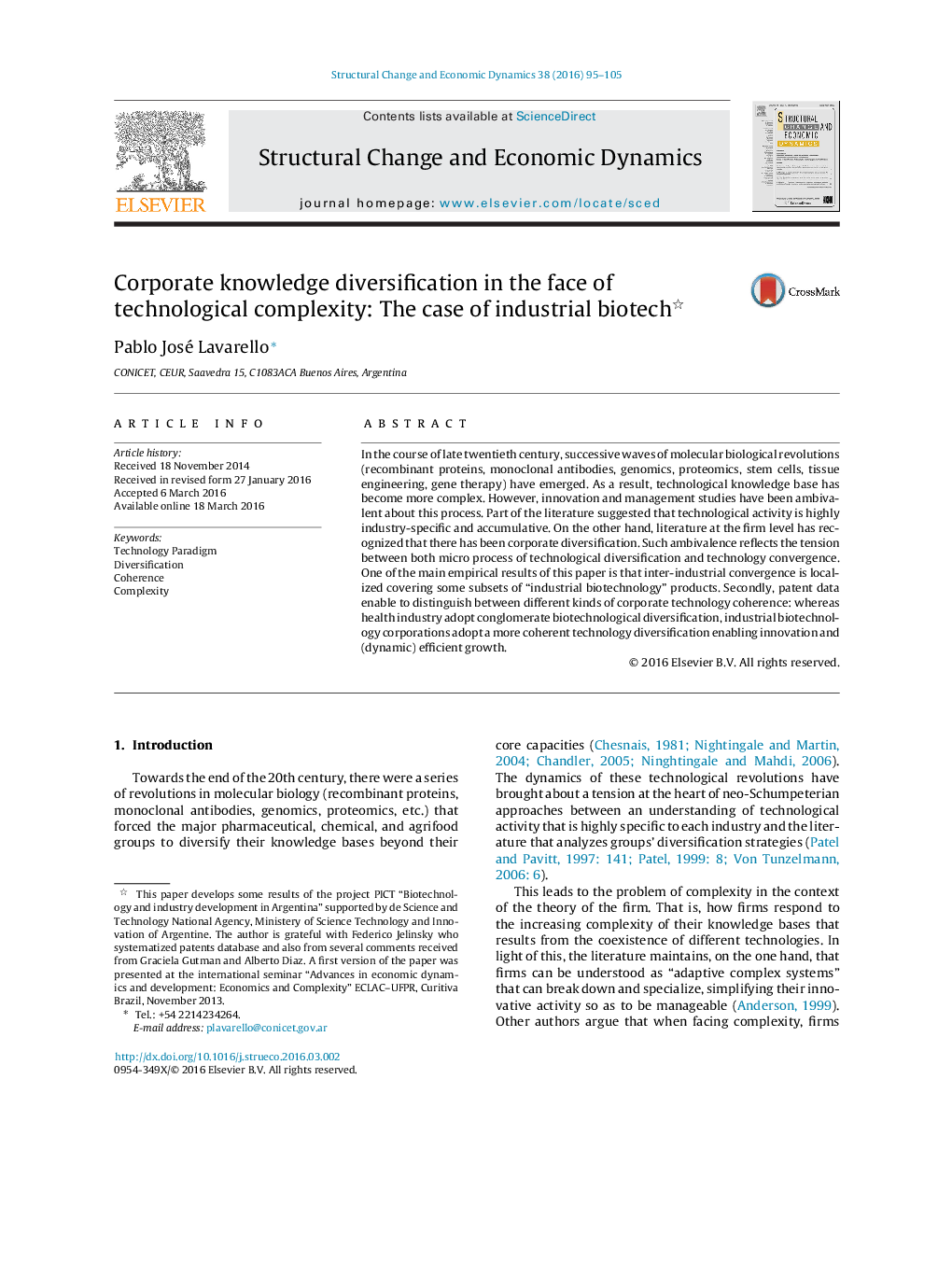| Article ID | Journal | Published Year | Pages | File Type |
|---|---|---|---|---|
| 988270 | Structural Change and Economic Dynamics | 2016 | 11 Pages |
•There is partial convergence among the biotechnological paradigms of the enzyme, biopolymer, and food industries.•Biotech applications in the health sector reflect a different dynamic with a differentiation process from 2000 onwards.•Diversified biotechnological firms with conglomerate strategies coexist with coherent strategies.•Coherence is what most explains leading biotech firms’ propensity to innovate.•This shows that low levels of exploitation of the complementarities within conglomerate strategies.
In the course of late twentieth century, successive waves of molecular biological revolutions (recombinant proteins, monoclonal antibodies, genomics, proteomics, stem cells, tissue engineering, gene therapy) have emerged. As a result, technological knowledge base has become more complex. However, innovation and management studies have been ambivalent about this process. Part of the literature suggested that technological activity is highly industry-specific and accumulative. On the other hand, literature at the firm level has recognized that there has been corporate diversification. Such ambivalence reflects the tension between both micro process of technological diversification and technology convergence. One of the main empirical results of this paper is that inter-industrial convergence is localized covering some subsets of “industrial biotechnology” products. Secondly, patent data enable to distinguish between different kinds of corporate technology coherence: whereas health industry adopt conglomerate biotechnological diversification, industrial biotechnology corporations adopt a more coherent technology diversification enabling innovation and (dynamic) efficient growth.
